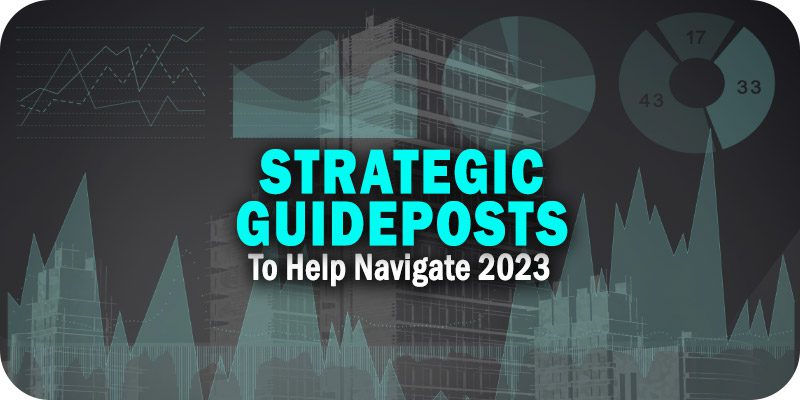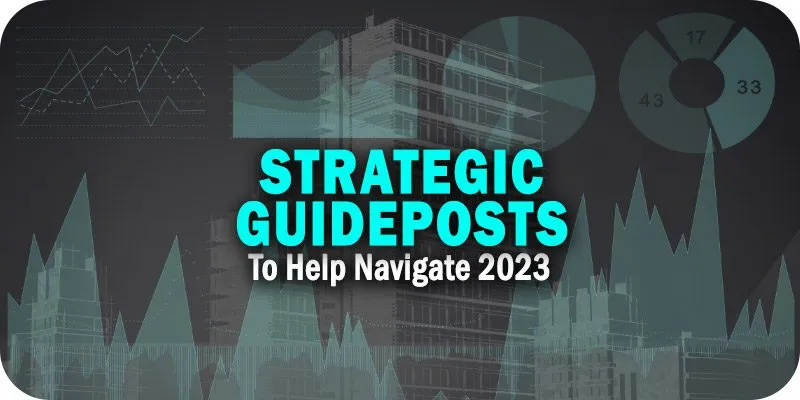3 Strategic Guideposts to Help Enterprises Navigate 2023
Blog: Solutions Review - Business Process Management

As part of Solutions Review’s Expert Insights Series—a collection of contributed articles written by industry experts in enterprise software categories—Chander Damodaran, the CTO at Brillio, outlines how three strategic guideposts (customer experience, digitalization, and decisoning) can help companies navigate toward success in 2023.
 Undeniably, the pandemic accelerated the digitalization of customer interactions by several years. These massive shifts impose a new way of thinking for enterprise leaders that are only heightened by the threat of a looming recession—an approach focused on shorter time to market, iterative processes, and value creation.
Undeniably, the pandemic accelerated the digitalization of customer interactions by several years. These massive shifts impose a new way of thinking for enterprise leaders that are only heightened by the threat of a looming recession—an approach focused on shorter time to market, iterative processes, and value creation.
The new year promises a widening performance gap between leaders and laggards. A segment of companies has embraced a new way of thinking regarding addressing customer needs and delivering business outcomes and incorporated them into their strategy for 2023. These prescient pioneers have identified three strategic guideposts to see their way through the recessionary forces in the year ahead.
- Power of experience
- Power of digitalization
- Power of decisioning
If there’s one trend you will see in the next year, it’s that successful enterprises—small and mid-size businesses and Fortune 500 enterprises alike—invest in these strategic guideposts and build the capabilities to orchestrate, operationalize, and integrate them into their ongoing digital strategies.
Power of Experience: Connected, Personalized, Immersive Experiences
Nearly all successful enterprises share one thing in common: They recognize they’re in the business of customer experience (CX). But as customers increasingly expect frictionless and seamless experiences through the channel, device, and touchpoint that is most convenient to them at that given moment, enterprises are also evolving from multichannel to omnichannel to multi-experience (MX). This involves leveraging various modalities, digital touchpoints, apps, and devices to design and develop a seamless experience.
Even though CX, MX, and UX are inextricably intertwined and interdependent in the digital experience economy, they’ve traditionally worked in siloes. As it becomes increasingly important to identify intersections between these disciplines to gain a competitive edge, businesses are looking to create more connected, personalized, and immersive experiences.
While immersive digital experiences are still in the early days, it’s time to get started now and keep experimenting. Enterprises need to evolve their technology infrastructure, strategic thinking, business models, and services to ensure they are not left behind.
This is the time to assess and discover suitable technologies and gain experience, starting small and moving fast while taking care of privacy and data security. These are the building blocks to include:
Hyper-personalization
In today’s competitive environment, organizations must act in a more contextually relevant and intelligent manner, which demands a detailed understanding of their target audience for better customer service, higher efficiency, growth, profitability, and increased client lifetime value.
Omnichannel delivery
Today’s customers expect the same level of service no matter where or how they shop. When customers physically and digitally engage with brands, integrated omnichannel strategies must prioritize customer service and an effortless buying experience.
Metaverse
In the metaverse, businesses will deliver entirely new products, services, and experiences that supersede anything that exists online today. Over time, the metaverse will offer decentralized, persistent, interoperable, and collaborative business opportunities and models that will help companies elevate the digital business to unprecedented heights, improving brand recall and loyalty.
Power of Digitalization: Combining pragmatic innovations with current investments to create a digitalized modular enterprise
New technologies are fundamentally changing entire markets and ecosystems. For example, transformation timelines are being compressed from years to months and happening across multiple functions simultaneously. Old business processes and customer touchpoints are being swept away by online and app-based companies powered by the cloud, APIs, analytics, and mobile.
Modern enterprises need a different level of agility, flexibility, adaptability, and resilience to thrive. They need to shift their architectural strategies from a hierarchical to a modular approach, using software components and APIs, as well as autonomous teams with distributed responsibilities, to deliver innovation quickly and adapt applications dynamically. Doing so will maximize their ability to build, assemble and reassemble core business elements at scale and provide new avenues for cost efficiency and revenue generation.
Technology enablers like Application as a Service, Automation as a Service, digital twins, and Infrastructure as a Service woven with security at their center have helped forward-thinking businesses transform from monolithic, traditional enterprises to modular enterprises built by the business for the business. The transformation involves significantly reducing complexity and legacy needs while breaking up the layers in the system landscape, turning them into interconnected modules performing only the tasks they were designed to do.
Power of Decisioning: Embracing a “data culture” that drives high-impact, data-driven decisioning
The essence of digital transformation is to become a data-driven organization, ensuring that critical decisions, actions, and processes are strongly influenced by data-driven insights rather than by human intuition. Thus, enterprises need to create a “data culture,” which requires shifting data ownership from the hands of a few specialists to a data democratization approach. By doing so, businesses can provide unfettered, enterprise-wide data access to everyone in the organization, thus becoming truly data-driven.
Done right, data democratization is a game changer, catapulting organizations to new heights of performance. The ability to instantly access, consume and understand data will spur faster decision-making, resulting in more agile teams delivering innovative products and services to serve customers better. Two critical components of a data culture include:
Data Products
As enterprises adopt these strategic guideposts and become data-driven businesses, they need to develop a mindset centered on the data product, built on cross-organizational trust enabled by a shift in organizational culture. Centralized data platform architectures and data lakes don’t scale well to meet changing organizational and process requirements, thus failing to deliver insights with the speed and flexibility needed.
Enterprises can derive enhanced benefits from a distributed data architecture, which multiply as these organizations grow. Benefits include improved business agility, scalability, and speed to value from data.
Responsible AI
Businesses are already working to unlock their potential in solving various business challenges. These range from finding anomalies in financial systems to prevent fraud to enabling personalized medication and care, improving customer service via chatbots, to optimizing supply chains.
However, this powerful, multi-faceted tool can have far-reaching unintended consequences not only to brand reputation and the bottom line but, more importantly, to employees, individuals, and society as a whole or executed with insufficient rigor and discipline.
This is where responsible and ethical AI comes in. At its core, responsible AI is about considering the impact of AI systems on real people. Responsible AI helps build trusted customer relationships. As enterprises take proactive action to combat bias and improve transparency for their AI systems, customer trust grows, leading to improved retention, spending, and adoption of new services/products.
Meeting Pressure with Innovation
As unprecedented pressure mounts on organizations to reshape customer expectations, more enterprises will invest in becoming customer-centric by delivering personalization at scale and frictionless experiences.
The opportunity to make significant leaps is here. Whatever 2023 brings, whether it’s a recession, more global conflict, or supply chain disruption, it’s clear that the success stories of this new year will be written by companies that took away the proper learnings from the pandemic era. These businesses will be the ones to respond to market demands and embrace these new strategic guideposts, delivering decisive advances in customer experience, operational efficiency, and a competitive edge.
The post 3 Strategic Guideposts to Help Enterprises Navigate 2023 appeared first on Best BPM Tools, Vendors, Software and BPMS.
